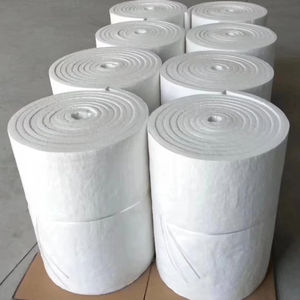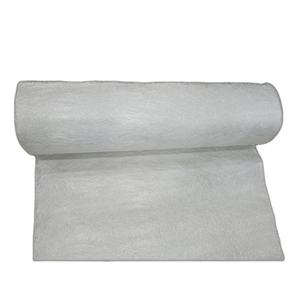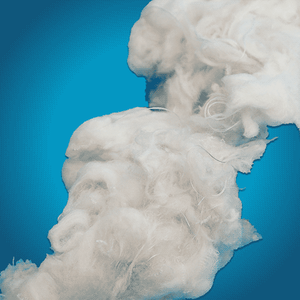Professional industry ceramic supplier, silicon nitride, silicon carbide, aluminum nitride and any other kinds of ceramics.
PRODUCT PARAMETERS
Description
Overview of Ceramic fiber blankets for 1260°C, 1400°C, and 1600°C. of various specifications for insulation fiber blankets.
Ceramic fiber blankets for 1260°C, 1400°C, and 1600°C. of various specifications for insulation fiber blankets. is a lightweight, high-temperature insulation material composed primarily of alumina-silica. It is manufactured through a melting and spinning or blowing process, resulting in a flexible, wool-like textile. This material is engineered to provide exceptional thermal management, conserving energy and protecting equipment in extreme temperature environments across various industries.
Features of Ceramic fiber blankets for 1260°C, 1400°C, and 1600°C. of various specifications for insulation fiber blankets.
-
Excellent Thermal Stability: Withstands continuous operating temperatures up to 1260°C (2300°F) and higher for certain grades, with minimal shrinkage.
-
Low Thermal Conductivity: Provides highly efficient insulation, reducing heat loss and improving energy efficiency.
-
Lightweight & Low Heat Storage: Offers low thermal mass, enabling rapid heat-up and cool-down cycles for improved process control and energy savings.
-
Thermal Shock Resistance: Highly resistant to damage from rapid temperature changes.
-
Excellent Flexibility & Resilience: Can be fabricated into blankets, boards, papers, and textiles to fit complex shapes and applications.
-
Good Chemical Stability: Resists attack from most corrosive agents, except strong alkalis and hydrofluoric acid.
Specification of Ceramic fiber blankets for 1260°C, 1400°C, and 1600°C. of various specifications for insulation fiber blankets.
Ceramic fiber blankets offer excellent high-temperature insulation. These blankets come in different grades for different temperature needs. The most common grades are for 1260°C, 1400°C, and 1600°C applications. Each grade has specific properties. Knowing the specifications helps choose the right blanket.
Blankets rated for 1260°C are widely used. These blankets typically handle temperatures up to 1260°C continuously. They often come in thicknesses like 25mm or 50mm. Common densities are around 128 kg/m³. The tensile strength is good. The thermal conductivity is low. This keeps heat in effectively. The main material is alumina-silica. This gives good chemical stability.
For hotter environments, 1400°C blankets are better. These withstand continuous heat up to 1400°C. They are often thicker, like 50mm. The density is usually higher, maybe 160 kg/m³. This increases strength. The thermal conductivity is still low. They handle thermal shock well. These blankets contain more alumina. This improves performance at higher temperatures.
The highest standard grade is for 1600°C. These blankets resist temperatures up to 1600°C continuously. They are designed for extreme heat. Thicknesses are substantial, often 50mm or more. Density is high, perhaps 192 kg/m³. This ensures durability. Tensile strength is strong. Thermal conductivity remains very low. They have a high alumina content. Zirconia is often added too. This boosts temperature resistance significantly. These blankets resist corrosion well.
Key specifications include thickness, density, tensile strength, thermal conductivity, and chemical makeup. Thickness affects insulation depth. Density influences strength and heat retention. Tensile strength shows how tough the blanket is. Thermal conductivity measures insulation efficiency. Lower numbers mean better insulation. The chemical composition determines the maximum temperature. Higher alumina and zirconia allow for higher heat resistance.
Ceramic fiber blankets are versatile. They insulate furnaces, kilns, boilers, and pipes. They save energy. They protect equipment. They improve safety. Choosing the correct temperature grade and specifications is crucial. It ensures long life and good performance. Always check the manufacturer’s data sheet for exact values.
Applications of Ceramic fiber blankets for 1260°C, 1400°C, and 1600°C. of various specifications for insulation fiber blankets.
Ceramic fiber blankets offer excellent insulation for high heat situations. They come in different grades to handle specific temperature needs.
The 1260°C grade blanket is a common choice. It works well for temperatures below 1260 degrees Celsius. People use it in many industrial furnaces and ovens. It is good for lining kilns. It helps insulate pipes carrying hot fluids. This blanket is lightweight and easy to cut or shape. You find it in different thicknesses and densities. Thicker blankets provide more insulation. Higher density blankets are tougher. This makes them suitable for areas needing physical strength.
For hotter environments, the 1400°C grade blanket is better. It withstands heat up to 1400 degrees Celsius. This makes it ideal for more demanding furnace linings. It suits applications like heat treatment equipment. It is also used in boiler insulation. It performs well where temperatures fluctuate a lot. This blanket offers better long-term heat resistance than the 1260°C type. It maintains its insulation properties longer under intense heat. It comes in various specs to match the required thermal performance and durability.
The highest standard grade is the 1600°C ceramic fiber blanket. It handles extreme heat up to 1600 degrees Celsius. This is necessary for very high-temperature processes. Industries use it in applications like metal heat treating at high temps. It is common in foundries for melting metals. It insulates gas turbines effectively. This blanket has superior resistance to thermal shock. It retains its structure even under severe conditions. It is essential for critical high-heat zones. Different thicknesses and densities are available for specific needs.
Company Profile
Tanki New Materials Co.Ltd. focus on the research and development, production and sales of ceramic products, serving the electronics, ceramics, chemical and other industries. Since its establishment in 2015, the company has been committed to providing customers with the best products and services, and has become a leader in the industry through continuous technological innovation and strict quality management.
Our products includes but not limited to Aerogel, Aluminum Nitride, Aluminum Oxide, Boron Carbide, Boron Nitride, Ceramic Crucible, Ceramic Fiber, Quartz Product, Refractory Material, Silicon Carbide, Silicon Nitride, ect. please feel free to contact us.

Payment Methods
T/T, Western Union, Paypal, Credit Card etc.
Shipment Methods
By air, by sea, by express, as customers request.
5 FAQs of Ceramic fiber blankets for 1260°C, 1400°C, and 1600°C. of various specifications for insulation fiber blankets.
Ceramic fiber blankets handle high heat. People often ask about temperature ratings. Our blankets come in three main grades. The 1260°C grade handles moderate heat. The 1400°C grade handles higher heat. The 1600°C grade handles the most intense heat. Use the right grade for your job. Using a lower grade blanket might cause problems.
People want to know where they can use these blankets. They are very flexible. People use them in furnaces and kilns. People also use them for pipe insulation. They fit into tight spaces easily. They are good for lining boilers. They save energy by keeping heat in.
People ask what these blankets are made from. They are mostly alumina and silica. This mix makes them strong against heat. The 1600°C blanket has more zirconia. The extra zirconia helps it resist much higher temperatures. The exact recipe changes for each temperature grade.
Thickness is another common question. Blankets come in many thicknesses. Common thicknesses are 25mm and 50mm. Thicker blankets provide more insulation. Thinner blankets are good for wrapping tight curves. The best thickness depends on your specific need. It depends on the heat level and the equipment.
People worry about safety. These blankets are safe when handled properly. Wear gloves and a mask when cutting them. The fibers can irritate skin and lungs. Finished installations are safe. The fibers are locked in place then. Always follow the handling instructions carefully.
REQUEST A QUOTE
RELATED PRODUCTS

High-temperature quartz fiber wool, low-dielectric ceramic fiber with high osmotic wave and chemical resistance.

Polycrystalline mullite alumina ceramic fiber board for thermal insulation

High-temperature insulation ceramic fiber sheets, ceramic wool s.

Excellent heat resistance, excellent insulation, ceramic fiber modules suitable for hot environments.

Aluminum fiber board direct supply of aluminum silicate insulation, 1900cc ceramic fiber board, 1000cc, 1200cc.



